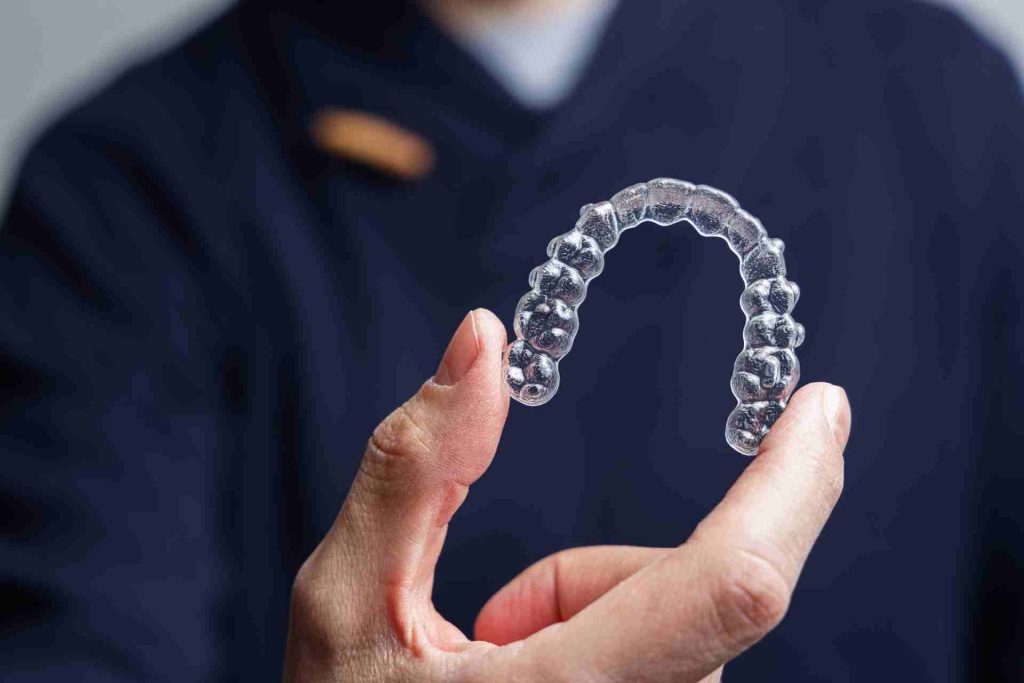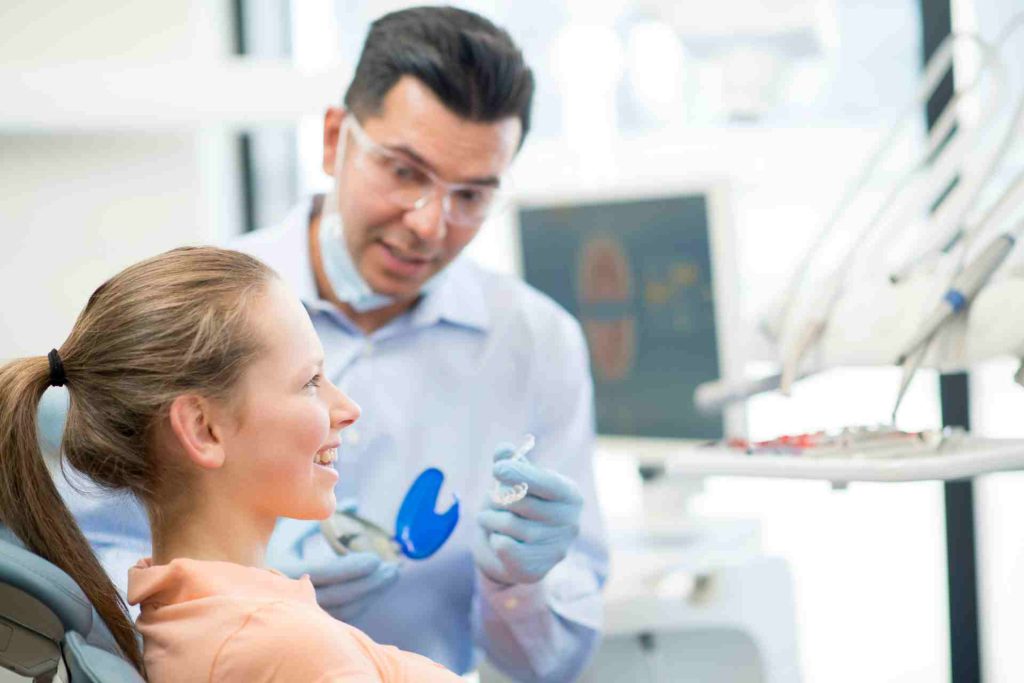In the world of orthodontic treatment, Invisalign has emerged as a game-changer, offering a convenient and discreet alternative to traditional braces. Invisalign aligners, known for their virtually invisible appearance and comfortable use, have become a go-to solution for many seeking a perfect smile.
However, understanding the cost of Invisalign is crucial for anyone considering this innovative orthodontic treatment. Just as it’s essential to comprehend the benefits of Invisalign for oral care, it’s equally important to demystify its price tag.

This guide will shed light on the factors that contribute to the cost of Invisalign, helping you make an informed decision on your journey toward improved oral health.
Invisalign is a groundbreaking solution in the field of orthodontics, revolutionizing the way we approach teeth alignment. It constitutes a series of custom-made, clear aligners – virtually invisible – that gradually shift your teeth into the desired position. Unlike traditional braces, these aligners are removable, making it easier to maintain your regular oral care routine.
The process begins with a consultation with an Invisalign-trained orthodontist, who develops a digital treatment plan tailored to your specific needs. The aligners are then custom-made to apply the right amount of force to the right place at the right time based on your plan.
You’ll wear each set of aligners for one to two weeks, removing them only when necessary, such as for eating, drinking, brushing, and flossing.
As you go through the series of aligners, your teeth will gradually shift to their final destination prescribed by your dental practitioner.
Choosing Invisalign over traditional braces offers a multitude of benefits. Invisalign aligners are almost invisible, offering a discreet solution for your orthodontic treatment. They are also removable, contributing to better oral hygiene, as they allow for regular brushing and flossing. Furthermore, Invisalign typically requires fewer office visits, saving you both time and inconvenience.

Lastly, Invisalign aligners are known for their comfort, devoid of the sharp edges that are often associated with traditional metal braces.
In conclusion, the cost of Invisalign is a worthwhile investment in your oral health, providing an effective, comfortable, and convenient orthodontic treatment that harmoniously fits into your lifestyle.
When considering Invisalign as an orthodontic treatment, it’s essential to understand that the cost of Invisalign can vary based on several factors. Below, we delve into how factors such as case complexity, treatment duration, geographical location, and the dentist’s expertise can influence your overall expense.
The complexity of the patient’s dental condition is a critical determinant of Invisalign cost. Invisalign treatment is custom-designed for each individual, and hence, the more complex your dental condition, the higher the cost. For instance, a patient with minor spacing issues will usually incur a lower cost than someone with severe malocclusion, as the latter requires a more intricate and lengthy treatment plan.
The length of your treatment plan significantly affects the Invisalign cost. Longer treatment times imply more aligner trays and more frequent check-ins with your orthodontist, which subsequently contributes to a higher cost. It’s crucial, however, to remember that this investment is designed to improve your oral care and overall health, making it worthwhile for many patients.
The geographical location and the local cost of living can also influence the price of your Invisalign treatment. Prices may vary significantly between urban and rural areas or from one country to another. High-cost areas often have pricier orthodontic services, and as such, the cost of Invisalign may be higher in these regions.
Lastly, the expertise and reputation of your orthodontist can affect your Invisalign cost. Experienced orthodontists who have a proven success rate with Invisalign treatments may charge a premium for their services. However, investing in an experienced professional can ensure a smoother treatment process and better results, thereby enhancing your overall oral care and well-being.

While it’s true that several factors can affect the cost of Invisalign, it’s essential to remember the convenience, comfort, and discrete nature of this advanced orthodontic treatment. It’s not just about cost but making an investment in your smile and confidence.
On average, the cost of Invisalign treatment might range from $3,000 to $8,000, depending on various factors previously discussed, such as duration of treatment, geographical location, and the expertise of the orthodontist. These prices may seem steep, but it’s crucial to remember that this is an investment in your oral care and overall health.
When comparing Invisalign with traditional braces, the costs are quite similar. Traditional braces range from $2,500 to $7,500. However, it’s important to note that while the costs may be comparable, the benefits and convenience offered by Invisalign are unmatched. The clear aligners not only provide the same effective orthodontic treatment, but they also offer more comfort and discretion, making them an excellent choice for many patients.
Many potential patients often wonder, “Does insurance cover Invisalign?” The answer largely depends on your specific insurance plan. Some insurance providers recognize Invisalign as a legitimate orthodontic treatment and will cover a portion of the cost, typically up to 50%. This can significantly reduce your out-of-pocket expenses for your teeth alignment solution, making oral care more affordable.

However, it is crucial to understand that insurance coverage often comes with conditions and limitations. For instance, some plans may only cover orthodontic treatments for individuals below a certain age or only up to a specific amount. Insurances also often have a lifetime cap on orthodontic work. It is important to thoroughly review the terms of your dental insurance policy or consult with your insurance provider to understand any nuances.
Navigating the cost of Invisalign with insurance can seem daunting, but don’t be discouraged. Many orthodontists offer assistance in understanding your insurance coverage and can work with you to create a payment plan that fits your budget.
Remember, investing in Invisalign is not just about enhancing your smile, but it’s also crucial for your overall oral care and health. Be proactive, do the research, and make the most of your insurance coverage to ensure your teeth get the best possible treatment.
Paying for Invisalign treatments doesn’t have to be a financial strain. There are several financing options available to ensure you can access necessary orthodontic treatment without breaking the bank.
Most dental practices offer in-house payment plans as a viable option for patients. These plans typically involve dividing the total cost of Invisalign treatment into affordable monthly payments, making it easier to manage financially. Benefits of these payment plans include no interest charges and the convenience of dealing directly with your dental provider. This way, you can focus on your oral care without worrying about large upfront payments.
HSAs and FSAs are pre-tax benefit accounts you can use to pay for eligible healthcare expenses, including Invisalign treatments. By using these accounts, you can reduce your total out-of-pocket expenses, making your orthodontic care more affordable. Always check with your HSA or FSA provider to ensure your treatment qualifies under their guidelines.
Companies like CareCredit offer another alternative for financing your Invisalign treatment. They provide healthcare credit cards that can be used to cover the cost of various treatments, including orthodontic treatments. With competitive interest rates and flexible payment options, third-party financiers can be a great resource for patients seeking financial assistance. Remember, terms and conditions may apply, so it’s essential to understand these before committing to a payment plan.
There are multiple financing options available for those considering Invisalign. Professional dental practices will guide you through these options, ensuring you receive the oral care you need while keeping your budget intact.
Despite the initial cost, investing in Invisalign treatments is a game-changer when it comes to oral care and self-confidence. This modern orthodontic treatment not only aligns your teeth to perfection but also boosts your oral health by making daily cleaning easier and reducing the risk of gum disease and tooth decay. The clear, removable aligners offer convenience and comfort, allowing you to enjoy your favorite foods and maintain your lifestyle without any major disruptions.

Remember, the cost of Invisalign is not a one-size-fits-all, and a personalized cost estimate can be provided after a detailed consultation. Your journey towards a more confident smile is just a consultation away.
Don’t let the cost deter you from achieving the perfect smile you’ve always desired. Schedule a consultation today at Kelly Road Dental in Roseville, MI, and discover the most suitable payment plan and orthodontic treatment option tailored for you.
Remember, when considering cost, think beyond the dollar signs and visualize the lasting benefits of a healthier, more confident smile.